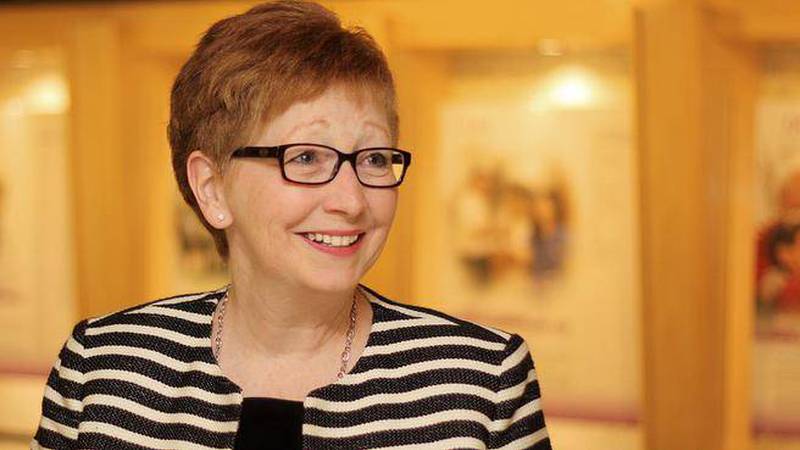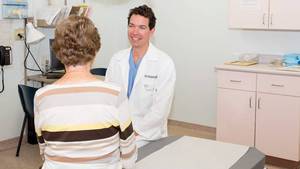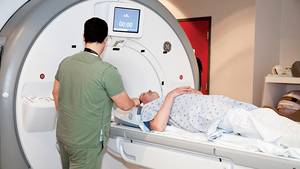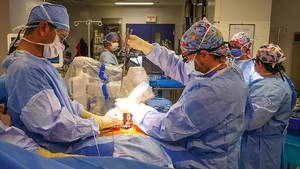Janet Knox, President and CEO of the recently formed Nova Scotia Health Authority, looks forward to working with partners across the province to build a strong organization that will enhance service delivery at the community level and improve the health of the entire province.
April 1 represented the start of a new healthcare structure in Nova Scotia. Can you briefly describe the recent changes?
On April 1, nine former district health authorities merged into one and became Nova Scotia Health Authority
What was the motivation behind consolidating health districts?
I can’t speak to the motivation about this decision, but I can tell you that with the previous organizations we were doing a lot of collaborative work together planning our services. I was one of those CEOs doing that. The move to create one health authority plus the IWK was a natural progression because there was work we determined needed to be done from a provincial perspective and having many organizations did create some barriers.
How do these changes impact healthcare services for patients across Nova Scotia?
Nova Scotia is among the unhealthiest provinces in Canada in spite of healthcare spending that is higher than the national average. It’s up to us, the people of Nova Scotia Heath Authority, along with our government, the IWK Health Centre, community partners and fellow Nova Scotians, to turn that around. It is possible and we must work together.
What can patients look forward to with these changes?
We want to make changes so that in 10 and 20 years, the people of Nova Scotia are healthier. I would like for the people who live here to focus on the health of our province so that when we make decisions and when we buy equipment, we know we are making the right choices for Nova Scotians in the long run.
You have a big job ahead of you. What does the first six months look like for you?
There will be challenges. Health and health care are not for the faint of heart, and amalgamating organizations is not easy. But I believe we have the vision, the wisdom and the commitment to be successful. I believe the result will be the best of all of us, opening up opportunities we have hoped for as well as those we haven’t even imagined.
We are getting to know how our services are delivered and developing a good understanding of the differences around the province. We are identifying the positive things that are happening so we can strategically make them work across the province with little effort. We want to begin looking at some of our provincial programs. For instance, we know we have challenges in emergency services, so we’re starting to view that from a provincial perspective.
Our job now is to build on the momentum of all the good work that has been done as we build an even stronger, more united system together.
Describe the relationship between local hospitals and the Nova Scotia Health Authority.
Local hospitals across the province are part of Nova Scotia Health Authority. These facilities have a profile in their community and we want to honour and support that. Each of our facilities has a local leader; as we move forward, these leaders will be an important part of planning our service delivery both locally and provincially.
How will the Nova Scotia Health Authority work with local healthcare foundations?
Most of our healthcare foundations belong to a provincial group, which creates an opportunity for discussion. Our VP People will be responsible for connections between Nova Scotia Health Authority and the foundations. There will also be a connection at the local site level and at the zone level, where we will make sure we continue those great partnerships.
How does this structure benefit the thousands of healthcare staff who work in hospitals across this province?
We now have more than 23,000 employees, 2,700 physicians, 7,000 volunteers, 5,500 learners, 41 foundations, more than 25 auxiliaries and 37 community health boards. People are our most important resource and a health organization is about people caring for people. This structure will benefit our physicians, employees and volunteers. It brings multiple health districts into one provincial body and allows staff greater opportunities to pursue career opportunities throughout the system.
In 2008, Alberta consolidated its multiple health districts into one provincial body. They recently announced they are moving away from this centralized model and re-establishing eight to 10 health districts. Does this concern you in regards to Nova Scotia’s direction or why do you believe this structure is going to work for us?In the months leading up to April 1, a transition team was making evidence-based decisions about how we move forward. We studied and interacted with every other place in Canada that had consolidated health districts, including Alberta. We learned about the challenges they faced and put strategies in place to deal with those issues from the start. We have four zones that will help us incorporate more local flavour in our planning. We always have to be watching and studying what others are doing. We’ve done that. We’ve studied Alberta, British Columbia, Manitoba, PEI, British Isles, New Zealand, Australia and Scandinavia. This is our “made in Nova Scotia” plan. We will keep track of how it’s working for us.
Any final comments you want to share with Nova Scotians?
The health of our population is very important and we have a lot of work to do. We really need to be focused on a healthier population and our health system needs to be there for Nova Scotians when they are ill. The health system needs to be sustainable and it needs to be there to support future generations of Nova Scotians. We look forward to working with Nova Scotia communities to help them be healthy and maintain health.








